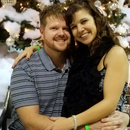Introduction: *Intense Night Sun*
Hello Everyone!
I recently acquired some old electronic/electrical scrap and I wanted to try and make something useful out of it again! I really enjoy trying to make something useful out of someones old junk! These old, broken electronics give us the opportunity to dissect and learn something out of the disassembly process.
On that thought! If I can make my something for my wife that will help her out in an Emergency... then she will be so grateful that she will let me keep my electronic workshop For Ever!! (Evil Genius Laugh!!) Waahhhhahaha!
Before starting our project we always put on our Safety Glasses and of course...You need a Super Helper!
Step 1: Step 1: the Disassembly Process!
The first thing that I acquired is an old LED Light fixture. I removed the circuit boards, and motion sensor and set them aside. The LED circuit boards have corrosion on them so I will just have to make a couple from a left over PCB Project. I was only able to salvage 1 LED, the remainder were bad.
The next thing that I acquired was an old, gutless lamp. The lamp was hollow inside, so it would give a place to hide and mount my circuit boards.
The next item that I get to take parts from was an ancient VCR Player. I wonder how many people will read this one day and ask.. what's a VCR? LOL! I want to salvage the VCR lid and components to make an enclosure for the electronics.
Step 2: Step 2: Making an Enclosure for the Lamp and Installing the Switches.
- The next thing that I did was take measurements from the inside of the lamp.
- Next, I took the VCR Lid and cut strips for the inside of the lamp.
- After assembling the strips into a square shape I added scotch tape to temporarily hold it into place so I could hot glue it.
- I needed to add 2 switches on the lamp, so I drilled holes and installed 2 toggle switches.
Step 3: Step 3: Wiring
Next, I started the wiring process..
In the wiring process it's best to add wire labels to identify what is what and take pictures. A picture will help you locate, understand and troubleshoot if you get lost. I like to wire label everything so I don't forget! Sometimes my girls can distract me when they are helping me... haha!
I found a lifted trace on one of the circuit boards, which is a path for the flow of electricity. Luckily, it wasn't broke off so I was able to repair it. I used a little bit of Loctite to bond it and then covered it with hot glue.
After I finished soldering wires to the PCB wires, I tested all of the connections (without power connected) to make sure that they had Continuity.
Step 4: Step 4: Install the PCBs Inside the Enclosure.
Next I installed the 2 PCB's inside of the enclosure. I made sure that the LED and switch wires went upwards and the Solar Panel and Battery wires went downwards.
I thought that the photo sensor would be a good option to keep, so I drilled a hole to mount it.The photo sensor can be easily bypassed if you wanted, by just placing a sticker over it.
Next, I drilled 2 small holes on the side of the enclosure to access to the sensitivity and time settings.
Step 5: Step 5: Build the Inline Battery Holder.
I've been looking online at the different battery holders trying to find a inline D Battery Holder. Unfortunately, I couldn't find one with the specifications that I need. So, I'm going to show you how I made one. Here's a link where I posted the Inline Battery Holder on Instructables!
https://www.instructables.com/id/-Super-Cheap-Inlin...
The difference between the one that I previously built and this on is that I used Rechargeable Rayovac D Batteries. (Image Shown) The outer battery dimension was slightly larger so I used a 1 1/4'' piece of PVC instead of a 1'' piece.
Step 6: Step 6: Building the Light Assembly!
In this step I built the light assembly.
I cut (2) PCB's, which were left over pieces from another project.
The standoffs were removed from that old VCR.
I had to order the Super Bright LED's because only (1) was good in the old fixture, but that's ok...It was free!!
I soldered (3) Super Bright LED's to each PCB and installed the standoffs.
Now, I have the Lights!
Step 7: Step 7: Making Connections
On this step I started making the remaining connections and mounting the motion sensor.
Step 8: Step 8: Light It UP!
Connect the Solar Panel!! Super Bright!!
Now, if we ever lose electric.... My Wife will be super happy!!!
And it turn... I will get to keep my workshop!
***For Ever!!!! Waaaahh-HAHAHAHA!!

Participated in the
Make it Glow Contest 2016

Participated in the
Green Electronics Contest 2016

Participated in the
Homemade Gifts Contest 2016













